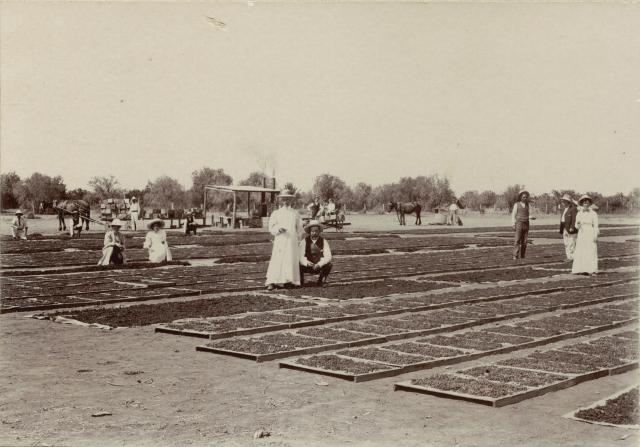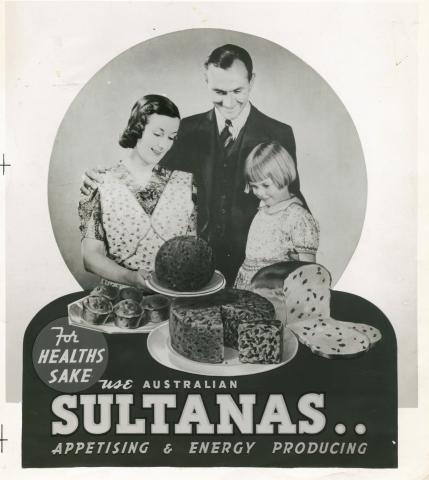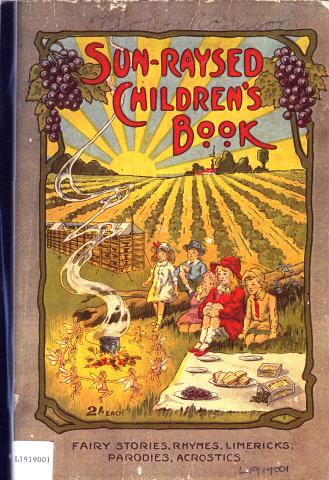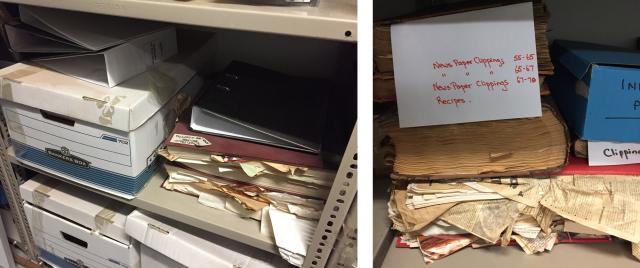
Author: Natasha Cantwell
Communications & Public Programming Officer
When Anne Mansell became the CEO of Dried Fruits Australia (DFA) in 2017 she couldn’t help but notice the vast collection of historical material stored in their Mildura offices. Objects and documents were squirrelled away in filing cabinets, haphazardly piled on shelves or stuffed into boxes with vague descriptions on the side. Items of historical importance sat alongside office supplies, throughout various meeting rooms, corridors and sheds. Anne says:
“while technical research documents were archived and put into an online library for dried grape producers, these other documents and photographs that mapped the development of this major industry in Mildura, hadn’t been looked at for years.”
This is all about to change, thanks to a Victorian Local History Grant.
The 2019 round of the Local History Grants has just been announced, so I spoke to Anne Mansell from DFA about their long-term project to preserve their historical collection. DFA received a grant in last year’s round to undertake a Preservation Needs Assessment, and now with the support of a 2019 grant, they can roll up their sleeves and begin the second phase of the cataloguing and conservation work.
It’s a situation that is probably familiar to a lot of organisations – while there has been the foresight over the years to save materials, no one really knows what to do with them. Unfortunately, as time passes, it gets harder and harder to properly organise, catalogue and preserve the collection. Not only are many of DFA’s paper items starting to deteriorate, but also the contextual information is being lost as those with first-hand knowledge get older.
As Anne began inspecting the collection of books, photographs, letters, videos and memorabilia, she recognised that there were documents that discussed key policy decisions; controversial marketing issues; and other historical accounts that have shaped the fabric of the Mildura community. Dried fruits were what founded the city, and what drew people to the area for the next hundred years.
When two Canadian brothers, George and William Chaffey first decided to start growing grapes in Mildura in the late 1880s, they published The Australian Irrigation Colonies, which became known as the ‘Red Book’. Dispatched to Europe and the UK, the promotional book painted an idyllic image of the region around the Murray River and managed to entice many potential immigrants to try their luck growing grapes on the other side of the world.
Returned World War One Australian Servicemen joined them during the Soldier Settler scheme, followed by Greeks and Italians after the Second World War and people from Turkey in the 1970s. Anne says that just about every family in Mildura will have some connection to the industry. Her family’s connection goes back to the earliest days, when her Great Grandfather sailed out from California with some vine cuttings. Amazingly, those original plants are still growing in Mildura to this day.
Dried fruit remains one of the state’s most important industries and 98% of Australia’s dried grapes are grown in the Mildura region. When growers started out in the 1890s, it was merely a practical solution to stop grapes spoiling on the long river and train trip to Melbourne, but dried fruits grew into a much loved snack.
Those mini cardboard boxes of Sunraysia raisins are a nostalgic image from many Australian childhoods. The fact that Sunraysia raisins cemented themselves into our childhood memories is no accident. It has its roots in a colourful and audacious campaign undertaken by C.J. De Garis in 1919. As the newly appointed Director of Publicity at the Australian Dried Fruits Association (as the DFA was then known) his task was to boost domestic sales, due to a shortage of export shipping space. Beginning with a public competition for a new slogan, De Garis chose ‘sun-raysed’ which was soon incorporated into everything from cartoons to beautifully illustrated fairy story books.
But dried fruits aren’t just for children, and De Garis’ efforts to appeal to adults included a Sunraysia Cafe in Melbourne staffed by young women from Mildura and he even commissioned R.A.A. Stoneham to write the 'Sun-Raysed Waltz' using his own lyrics:
“When the rays of the sun, greet the day, just begun,
Then my heart it is glad, nevermore to be sad,
There’s a joy that is mine, eating fruits from the vine,
For they gather their bloom day by day, in a bright sun ray.”
The Australian Dried Fruits Association initially had enormous confidence in De Garis. His big ideas put Mildura on the map and Sunraysia was becoming a household name. However, he overspent his budget, causing financial issues that the Association was having trouble justifying. The DFA’s collection contains many letters and meeting minutes that demonstrate their ongoing conflict as De Garis defended his ideas.
With all this history requiring preservation, the collection needed to be cleaned, organised and rehoused in a suitable environment, but DFA weren’t sure how to approach this mammoth task. With the support of a previous Local History Grant (2018) they were able to enlist the services of Jude Fraser from The Grimwade Centre for Cultural Materials Conservation to help point them in the right direction.
Jude travelled to Mildura to carefully assess DFA’s collection, storage facilities and procedures. Her comprehensive report noted all the current issues, from the lack of a collections policy, right down to individual rusty paper clips in the records. But for every problem, there was also a solution and the report included a suggested action plan. One of the key recommendations was to employ an archivist to assist staff as they worked through the cleaning and rehousing project. With the recent Local History Grant 2019 announcement, DFA have just received a second round of funding to carry out this plan.
Once the collection is properly archived, DFA will work through a process to ensure availability to the public, either online or through the Mildura Rural City Council Library services.
DFA now feels more confident that their collection will be available for the community. Anne’s advice to other organisations is to:
“treasure historical information – many of the issues we currently deal with have been dealt with before, just at a different time and place. We can learn a lot from this historical information, therefore it is imperative to preserve it for future generations.”
Learn more about the local history grants and view the full list of recipients on the grants section of our website here.
Material in the Public Record Office Victoria archival collection contains words and descriptions that reflect attitudes and government policies at different times which may be insensitive and upsetting
Aboriginal and Torres Strait Islander Peoples should be aware the collection and website may contain images, voices and names of deceased persons.
PROV provides advice to researchers wishing to access, publish or re-use records about Aboriginal Peoples






